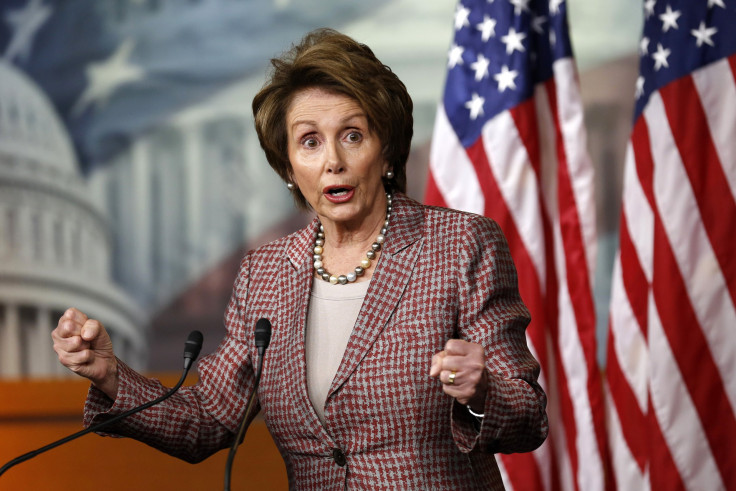
With the clock ticking on immigration reform in 2013 and elections in 2014 making passage of comprehensive reform next year unlikely, Nancy Pelosi may go for a fourth-quarter score on the issue by cobbling together two bipartisan bills - one crafted by the House Homeland Security Committee and the Senate's overhaul approved by that chamber in June - into a single plan. Pelosi would time the public release of the bill to coincide with the October 5 "National Day of Dignity and Respect", the start of a four-day series of rallies planned by immigrant advocates in at least 60 cities across the United States in a push for immigration reform with a path to citizenship for the undocumented.
Sources familiar with the California Democrat's plan told Politico that it would combine the Senate's comprehensive bill with the Border Security Results Act, a bipartisan border security bill introduced back in April by Reps. Bennie G. Thompson (D-MS) and Michael McCaul (R-Texas). The latter would stand in the place of the Senate bill's big provision for border security - the so-called "border surge" amendment which put $46 billion toward hiring 20,000 more Border Patrol agents, building 700 more miles of fencing and sending drone aircraft equipped with high-powered surveillance systems on patrol along the United States' border with Mexico. That amendment's provisions were said to be "almost overkill" by one of its two sponsors; Senator John McCain (R-Ariz.) backed it, but has since said that "we don't need 20,000 additional Border Patrol agents" and pointed to surveillance technologies as the only necessary area of improvement.
By contrast, the Border Security Results Act sets out a simpler set of stipulations which include a greater focus on detection and surveillance technologies. It would require the Department of Homeland Security to develop and implement a strategy for achieving 100 percent "situational awareness" - including real-time surveillance - of all of the nation's international borders within two years. Areas found to have the most illicit cross-border activity would need to achieve a 90 percent "effectiveness rate", meaning 90 percent of all would-be unauthorized border crossers be apprehended along the way or deterred from entering. The Act makes no provision for extra border agents or fencing but does for a wide range of detection technologies, among them biometric technologies at ports of entry and manned and unmanned aircraft equipped with cameras and sensors.
Pelosi's plan could run into problems of much the same type as the Senate's original bill: many Republicans in the House and Senate say they don't trust President Obama and authorities in the DHS to deliver on border-security provisions, and want any legalization of currently undocumented immigrants to be tied to specific border-security metrics. Two Republican members of the House bipartisan "Gang of 7" left the group just last week, citing "a lack of faith in President Obama to enforce current and new laws necessary to solve the immigration problem".
RELATED: Will The 'Border Surge' Increase Migrant Deaths?
© 2025 Latin Times. All rights reserved. Do not reproduce without permission.




